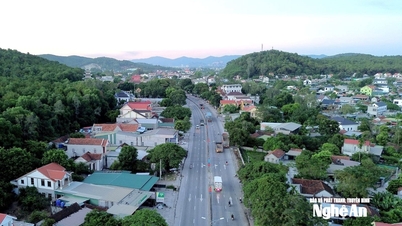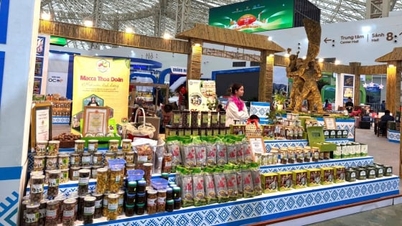
Tight supply, global coffee prices continue to "heat up"
At the end of yesterday's trading session, the industrial raw material market recorded relatively mixed developments. Notably, the shortage of supply continued to push up coffee prices. Specifically, Arabica coffee prices increased by more than 2% to 9,118 USD/ton - approaching the highest level in mid-October; while Robusta coffee prices also increased by 0.1% to 4,686 USD/ton.
According to the Vietnam Commodity Exchange (MXV), concerns about supply shortages in Brazil continue to be a key factor supporting coffee prices in the international market. The Brazilian National Supply Agency (Conab) has just announced a forecast that the country's coffee output in the 2025-2026 crop year is estimated to reach only 55.2 million bags, down nearly 2% compared to the previous year. Of which, Robusta output is expected to reach a record 20.1 million bags, but Arabica output - Brazil's main coffee type - is expected to decrease by more than 11%, down to below 35.2 million bags. The cause is determined to be due to unfavorable weather conditions and the "biennial" growth cycle of coffee trees, causing productivity after the peak crop to often decline significantly.

In addition to production factors, supply on ICE is also tightening. Arabica inventories are continuously falling, now at around 22,000 bags - a record low in recent years.
In key growing regions, production continues to face many obstacles. In Brazil, the heat wave in early October caused flower buds to burn and fall, posing a serious risk to the 2026-2027 crop. In the Central Highlands, heavy rains during the harvest period have significantly delayed progress. Typhoon Kalmaegi, with winds of force 13-14 and gusts of force 17, is forecast to make landfall in the region on November 7, bringing with it very heavy rainfall. Meteorological forecasts show that Gia Lai could receive an additional 212.5 mm of rain, while Dak Lak is expected to receive an additional 139 mm in the next 15 days, making the already high humidity in the growing region even higher.

The prospect of oversupply continues to weigh on oil prices.
On the other hand, according to MXV, the energy market yesterday was deep in red. In particular, world oil prices continued to be under downward pressure due to the increasingly obvious prospect of global oversupply, especially after the appearance of the latest report from the US Energy Information Administration (EIA). At the end of the trading session on November 5, WTI oil prices once again fell below the threshold of 60 USD/barrel, recording a decrease of about 1.6% and stopping at 59.6 USD/barrel; while Brent oil prices also returned to the mark of 63.5 USD/barrel, corresponding to a decrease of about 1.3%.
Data reported by the EIA showed that commercial crude oil inventories in the US in the last week of October increased by more than 5 million barrels, the strongest increase since July. The American Petroleum Institute (API) also recorded similar results, estimating that inventories had also reached 6.5 million barrels - much higher than the market's forecast.
“The recovery in imports and the slowdown in refinery activity as refineries conduct scheduled maintenance are contributing to the recovery,” said Matt Smith, chief analyst at Kpler. “In the week ending October 31, the US imported an average of 5.9 million barrels of oil per day, up nearly 900,000 barrels from the previous week.
The news further reinforces the already-forecasted global oversupply scenario, with the potential for increased supply not only coming from OPEC+ but also from the Americas, including Canada. In its recently released budget, Ottawa is expected to scrap emissions regulations for oil and gas exploration, which could see increased supply from the North American country.
Over the past week, world oil prices have fallen by about 1.5-2%. However, this fluctuation has not been reflected evenly on finished oil product exchanges. On the SGX (Singapore), RON92 and RON95 gasoline prices fell nearly 2%, while the oil product group increased by 2.5-3%.
Source: https://baochinhphu.vn/thi-truong-hang-hoa-gia-ca-phe-tang-manh-dau-wti-roi-khoi-nguong-60-usd-thung-102251106103205983.htm





![[Photo] Closing of the 14th Conference of the 13th Party Central Committee](https://vphoto.vietnam.vn/thumb/1200x675/vietnam/resource/IMAGE/2025/11/06/1762404919012_a1-bnd-5975-5183-jpg.webp)


































































































Comment (0)